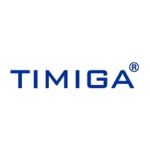The application of hot runner technology has some obvious advantages, mainly the reduction in raw material waste and the ease of achieving automation in injection processing. In many cases, the production volume of large products is achieved by shortening the injection cycle or adopting other beneficial technologies. Some mold designs have been simplified. Injecting certain large-sized products would be difficult, or even impossible without hot runner technology. Only by using hot runner molds can cost-effective production be possible. In mass production of products, hot runner technology can achieve low costs. However, a basic prerequisite is the correct selection of the hot runner system. If the wrong choice is made, the opposite effect will occur. Some negative effects of hot runner technology during processing stem from misconceptions. For example, arbitrarily selecting nozzles; believing exaggerated claims about optimal parameters and durability, choosing cheap nozzles; using nozzles manufactured by small workshops; unskilled operation; lack of skills and understanding of physical phenomena in plastic processing; lack of reasonable strategies to reduce costs; also due to the poor performance of early hot runner systems. Hot runner manufacturers are aware of the significance of considering these situations and actively provide users with information on the performance of hot runner operations and correct selection. They offer the best explanations regarding relevant components and often take responsibility for system selection.
No single hot runner system can be suitable for all plastic materials and all types of injection molded products. The range of variation in rheological and thermal properties of thermoplastics is very wide. This means that a dedicated hot runner system may be suitable for one type of thermoplastic but less so for others, and cannot suit all materials. Further improvement in the operation of hot runner systems depends on numerous factors such as injection volume and rate, flow path length, mold cavity shape, and plastic coloration. There are certain limitations in applications for heat-sensitive plastics, shear-sensitive plastics, plastics with flame-retardant additives, plastics with fibers and reinforcements.


